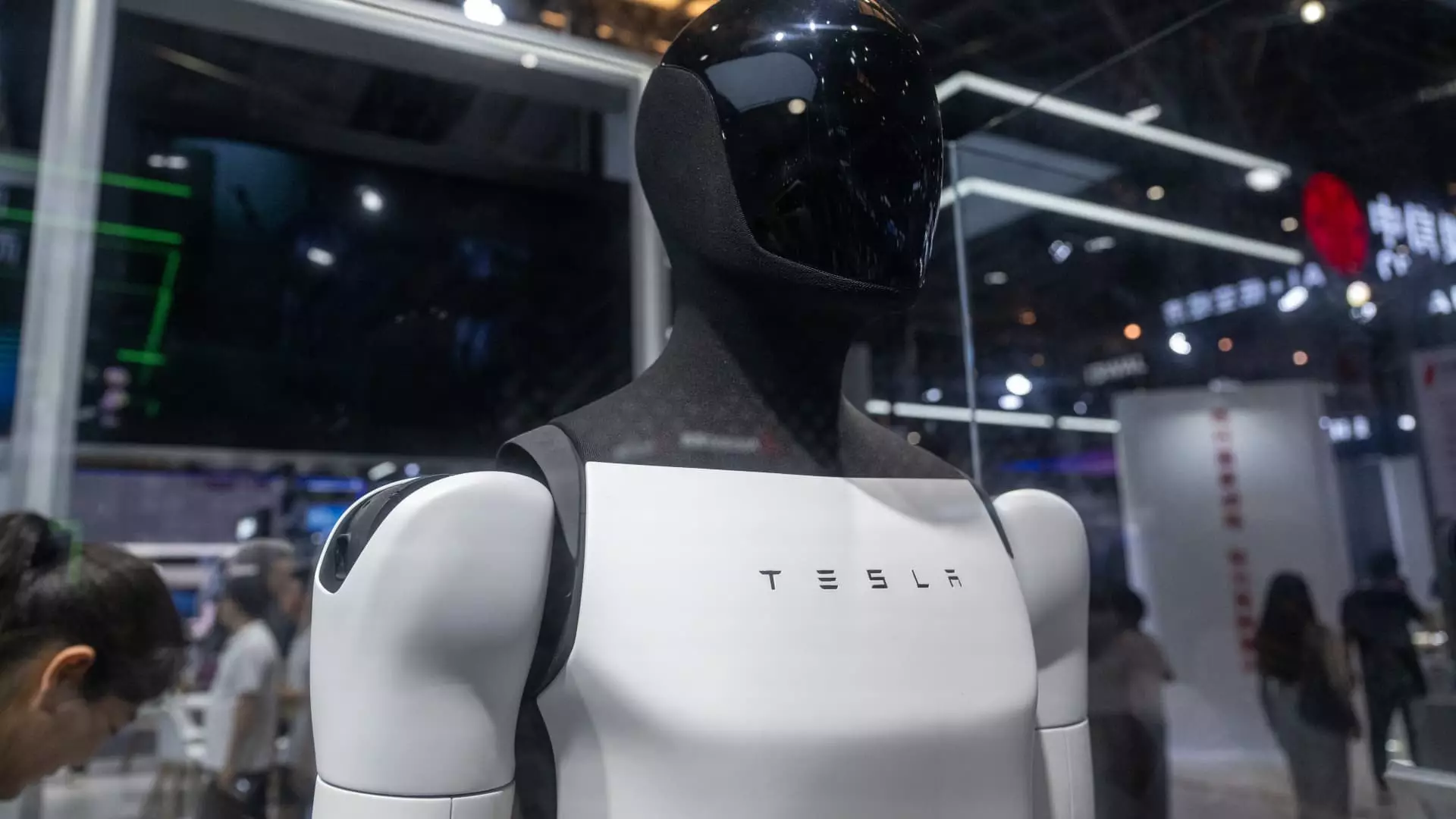In the high-stakes world of technology manufacturing, rare earth elements (REEs) play a pivotal role, especially in cutting-edge industries like electric vehicles and robotics. Tesla CEO Elon Musk’s recent comments regarding China’s new trade restrictions on rare earth magnets highlight the intricate dynamics at play. These restrictions, implemented as a response to geopolitical tensions, underscore China’s dominant position in the global supply of key materials essential for innovations such as Tesla’s Optimus humanoid robots. As one of the leaders in electric vehicle technology, Tesla finds itself navigating through these turbulent waters, confronting both opportunities and challenges.
Musk’s assertion that these supply chain disruptions could impact the production of the Optimus robots is alarming for investors and tech enthusiasts alike. The new export controls imposed by China on seven rare earth elements—including those pivotal for both defense and automotive technologies—signal a potential shift in the balance of technological power. The directive necessitates that companies like Tesla obtain licenses for the use of these materials, emphasizing China’s control over such critical resources. In this context, it becomes crucial for Tesla to strategize effectively, ensuring that its supply chain remains resilient amidst the uncertainties of international relations.
The Implications of Geopolitical Tensions
The trade restrictions have been interpreted by many as a reprisal of increasing tariffs from the U.S., aimed at countering China’s trade dominance. This retaliatory action serves as a stark reminder of the fragile interplay between technological advancement and political maneuvering. Musk made it clear that, amid these challenges, the company is in communication with Chinese authorities, seeking assurances that its operations will remain free from military associations. While Musk assures stakeholders that the primary focus is on humanoid robotics, the underlying threat of military uses shadow the discussions, complicating Tesla’s efforts to position itself in this breakthrough technology sphere.
The core of the issue lies in the unpredictable nature of international trade policies, which can drastically influence the operational capabilities of tech giants. While Tesla has ambitious plans for the Optimus robots—projecting production of around 5,000 units within the year—the road ahead appears fraught with hurdles shaped by external geopolitical factors. The proactive stance Musk has adopted showcases an essential shift from merely responding to market trends to actively engaging in the political milieu influencing those trends.
Future Perspectives: Innovation Amid Competition
Tesla’s trajectory hinges not only on overcoming supply chain disruptions but also on addressing competitive pressures from emerging players. Companies like Unitree Robotics and AgiBot, positioned within China, are ramping up their production capacities and could capitalize on the trade restrictions affecting Tesla. This intensifying rivalry emphasizes the importance of agility within the tech sector. While Musk projects confidence in Tesla’s capabilities, the reality of competing against established and potentially more agile companies highlights a crucial aspect that could affect market dominance.
The urgency for Tesla to innovate and establish new growth avenues is echoed by industry insiders. Figures like Steve Westly accentuate the need for Tesla to pivot beyond its core electric vehicle market to maintain leadership in the rapidly evolving technology landscape. As Tesla faces increasing scrutiny and competition, the deployment of humanoid robots in their factories symbolizes an attempt to leverage automation as a force multiplier in operational efficiency. The company finds itself at a crossroads where innovation and competition will dictate its success in reshaping the future of robotic technologies.
An Optimistic Lens on the Horizon
Despite the challenges posed by trade barriers and fierce competition, there remains an undeniable optimistic undercurrent to Musk’s vision for Tesla. The potential integration of humanoid robots into Tesla’s operations could not only enhance productivity but also redefine industries across the board. The fusion of technology and innovation as a reaction to geopolitical challenges brings forth a narrative that emphasizes resilience.
As the market for autonomous robotics begins to bloom, and as Tesla navigates through these complexities, the very essence of innovation will be put to the test. Musk’s ambitions may indeed seem audacious, but they are a powerful testament to how technological advancement can persist even in the face of geopolitical adversity. This ongoing saga will undoubtedly shape the future of technology, bringing forth a transformative era that holds the capacity to redefine human-machine interactions and revolutionize industries worldwide.

